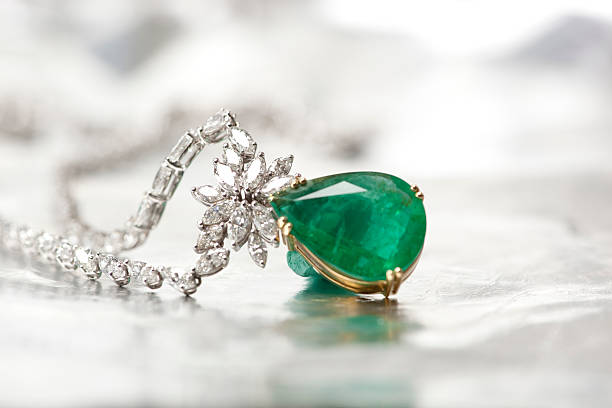Why Sterling Silver Jewelry Is Popular All Entries

While plenty of jewelry is made of pure gold, not much jewelry is made of pure silver. Since silver is a soft metal, it needs to be mixed with other metals for certain purposes, such as jewelry. Sterling silver is an alloy, which is a mix of metals. It contains 92.5 percent silver, which is a standard known as "925 sterling silver."
Evolution of Sterling Silver
Silver was prevalent as currency during the Ancient Greek and Roman times. Sterling silver orginated in Europe, starting with Norman silver pennies during the era of William the Conquerer in the late 11th century. Within the next century, the alloy began to appear in jewelry. By 1275, Edward I of England established the first legal definition of sterling silver.
The alloy was also used as currency in the "New World" colonial era from 1634 to 1776. During this period, the value of silver fell to half of gold's value due to its abundance. A new manufacturing technique called "die striking" emerged in 1777, ushering in a new era for jewelry using stamp presses and drop hammers on metals. It opened the door to the first mass production of low-cost jewelry.
The Revolutionary War era is also known as "the golden age of American silver." Paul Revere owned a silver rolling mill and got rich as a silversmith selling low-end goods made of sterling silver. During the Industrial Revolution of the mid-nineteenth century, silver became used more for industrial purposes and less for artistic designs. Sterling silver became a common material for cutlery during this time, as it's easier to clean compared to pure silver.
The mass production of sterling silver jewelry became more refined by the Victorian era of the late nineteenth century. Queen Victoria of England helped popularize sterling silver as luxury jewelry. Some of the reasons the alloy caught on include its light weight and versatility.
Attraction of Sterling Silver
Sterling silver, the highest grade of silver metal, has a lustrous and shiny appearance that makes it blend well with diamonds and most other gems. While the standard composition of the alloy is 92.5 percent silver, the remaining metals typically include mostly copper. While Britannia silver is even more pure with 95.8 percent silver, it's not as robust as sterling silver, although it commands higher value. Fine silver is 99.9 percent or more silver, which is too soft for jewelry.
Today sterling silver is found in rings, earrings, necklaces, pendants, and watches. Not only is it eye-catching when it's maintained, sterling silver never goes out of style and associates with a classic appearance. It doesn't really require much care other than cleaning it periodically with a soft cloth.
The affordability yet beauty of sterling silver makes it suitable to wear daily in either casual or formal situations. It symbolizes elegance, while it also communicates minimalism. Since it is a durable material, it can be handed down for generations and maintain both emotional and monetary value.
Conclusion
Sterling silver has been a popular choice for jewelry over the past century because of its classic shine, versatility, and durability. It's one of the most affordable options for captivating jewelry associated with royalty and prestige. Contact Ralph Mueller & Associates for more information on different types of amazing jewelry to buy and sell on the global market.